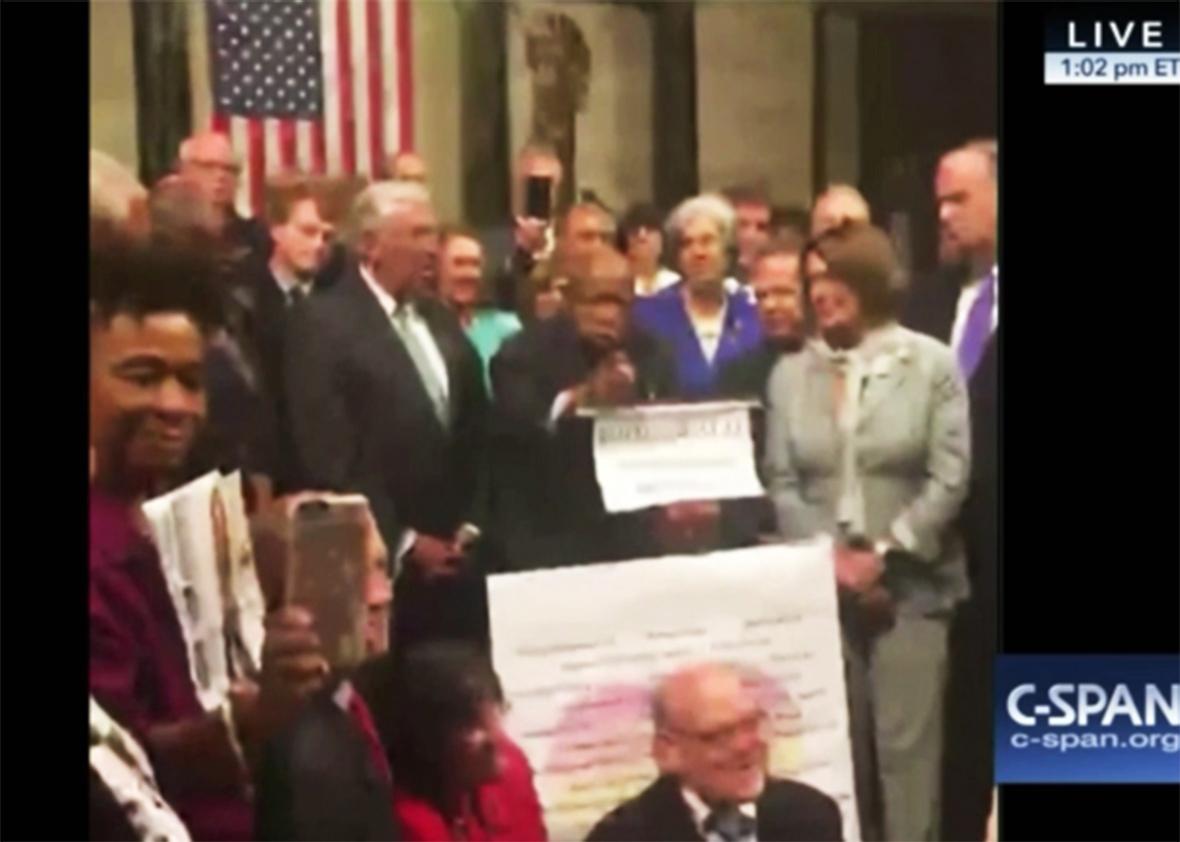Democratic members of Congress just finished their sit-in on the House floor. As Jamelle Bouie noted early this morning, the sit-in was unprecedented—and perhaps transformative—for many reasons: the ideological uniformity with which Democrats have rallied around gun control; their willingness to disrupt normal House business; and the form of the protest itself, which feels like a tactic from a bygone era.
But there’s another way in which the sit-in marks a political watershed: It unfolded via live-stream on social media.
Typically, footage from the floor of the House of Representatives is aired on C-SPAN. But when Speaker Paul Ryan declared the House in recess in response to the sit-in, C-SPAN’s feed cut out. That’s when Facebook Live, a live video-streaming service launched in August and revamped in April by the social media giant, and Twitter’s year-old live-streaming app Periscope, became essential.
After C-SPAN stopped broadcasting, Democrats quickly went on the offensive, decrying the move as majority-party obstructionism. Here’s Massachusetts Sen. Elizabeth Warren, who joined the sit-in Wednesday, on Twitter:
But as the Washington Post reported late Wednesday, the drying up of C-SPAN’s feed was less a matter of partisan politics than of procedure. House Republicans, who were presiding over the floor when Lewis began his sit-in at 11:25 a.m., had no choice but to call a recess after the demonstration interrupted scheduled House business. Per rules laid down in January 2015, when members of the 114th Congress first took their seats, that meant C-SPAN’s coverage went with it.
A clearly frustrated C-SPAN staffer clarified this point in a pinned tweet that sat atop the network’s Twitter feed as the sit-in rolled on:
Democrats quickly found a way around that. In a first-of-its-kind maneuver, C-SPAN began airing the Periscope live-stream feed of California Rep. Scott Peters and the Facebook Live feed from Texas Rep. Beto O’Rourke. Here’s some of that footage:
Peters:
O’Rourke:
After a brief interlude—during which Ryan reopened the session in an ultimately futile bid to restore order—brought C-SPAN’s cameras back to life, legislators continued to use social media to broadcast the proceedings to an audience wider than the infamously soporific network’s. A Facebook spokesman told me that, over the course of the sit-in, 19 House members used Facebook Live and garnered a combined viewership of 3 million Facebook users. Facebook and Twitter must be thrilled. (Several of the more prolific live-streaming legislators even got personalized shoutouts from Facebook CEO Mark Zuckerberg Thursday afternoon.)
The demonstration provided ideal conditions for illustrating the power of live-streaming to politicians—the capacity to get around traditional media and broadcast a message directly to the people. The sit-in may have ended. Democrats’ current fever over gun control may break. But don’t expect the live-streams to go dark anytime soon.
